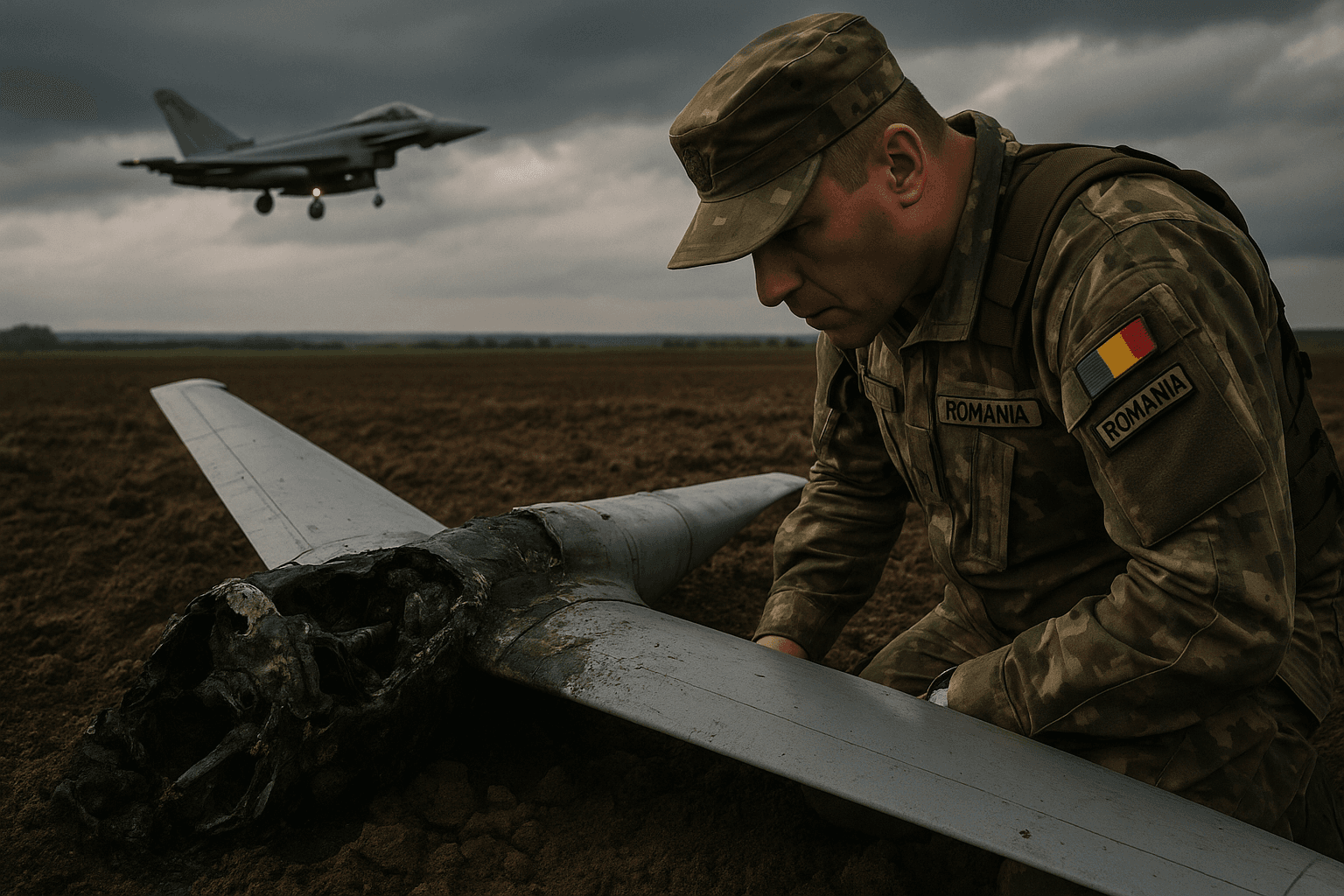NATO jets intercept Russian drones, one found crashed in Romania
NATO scrambled German Eurofighter Typhoons and Romanian F 16s after two Russian drones crossed into Romanian airspace, marking the deepest and first daytime incursion since the full scale war began. The incident, which included a downed drone in Vaslui County and related incursions in Moldova, has heightened concern across NATO's eastern flank and spurred talks on bolstering counter UAV capabilities.

NATO aircraft were scrambled on November 25 after two Russian unmanned aerial vehicles crossed into Romanian airspace, officials said, in what Romanian authorities described as the deepest and first daytime breach of national airspace since the full scale war began. German Eurofighter Typhoons and Romanian F 16s were vectored to intercept the drones as they traversed the border region.
One of the drones was tracked returning into Ukrainian airspace, while the second was later located crashed near the village of Puieşti in Vaslui County, roughly 70 miles about 112 km from the Ukrainian border. Romania’s defence minister said the downed drone appeared to be unarmed and may have crashed after running out of fuel. German pilots had been authorized to shoot the drone down but did not engage given safety and operational constraints.
The incursion added a new layer of unease among NATO members on the alliance’s eastern flank. Airspace breaches by remotely piloted systems raise complex challenges for rules of engagement and for the alliance’s obligation to protect member sovereignty without escalating into a broader conflict. The episode is likely to accelerate discussions in allied capitals about strengthening detection, mitigation and interception capabilities specifically tailored to unmanned aerial systems.
Moldovan authorities reported a series of related drone incursions on the same day, and said a drone fragment landed on the roof of a house in Cuhureştii de Jos. While Moldova is not a member of NATO, the proximity of these events to a trio of states that border Ukraine underscores the cross border nature of modern aerial operations and the risks they pose to civilian populations and regional stability.

The Romanian defence ministry characterized the incident as a breach of national airspace and said investigations would continue to establish the precise flight paths and origins of the vehicles. NATO officials stressed the need to balance deterrent posture with measures to avoid unintended escalation when remotely piloted systems operate near crowded areas.
Analysts said the episode underlined the limits of existing air defense networks in addressing low signature, long endurance platforms that can loiter and cross borders at altitudes and profiles that challenge conventional radar based detection. For eastern flank governments, the practical takeaway is an urgent case for investment in layered counter UAV systems that combine improved surveillance, electronic warfare tools and interceptors that can be used with calibrated rules of engagement.
The incident will also test alliance political unity as capitals weigh responses that reassure domestic publics while avoiding steps that could be construed as direct military retaliation. In the short term, expect an increase in patrols, tighter airspace monitoring and accelerated technical cooperation among NATO members to close gaps exposed by the incursions. The broader legal and diplomatic repercussions are likely to play out in coming days as investigators collect evidence and allies consult on shared defensive measures.


